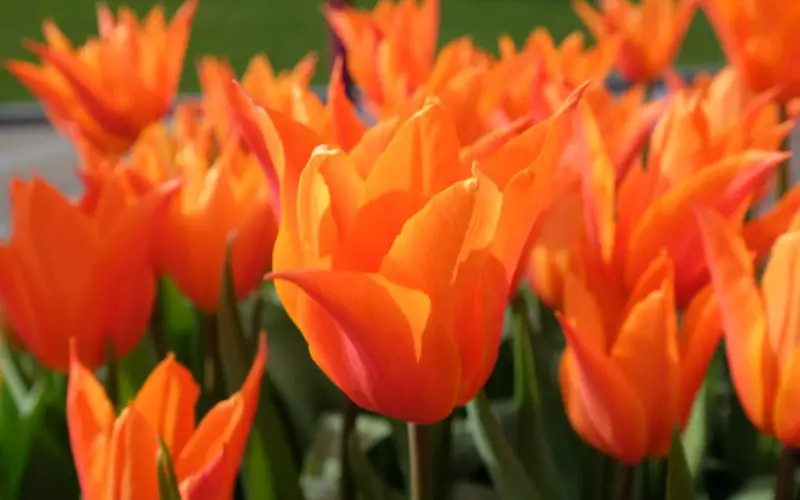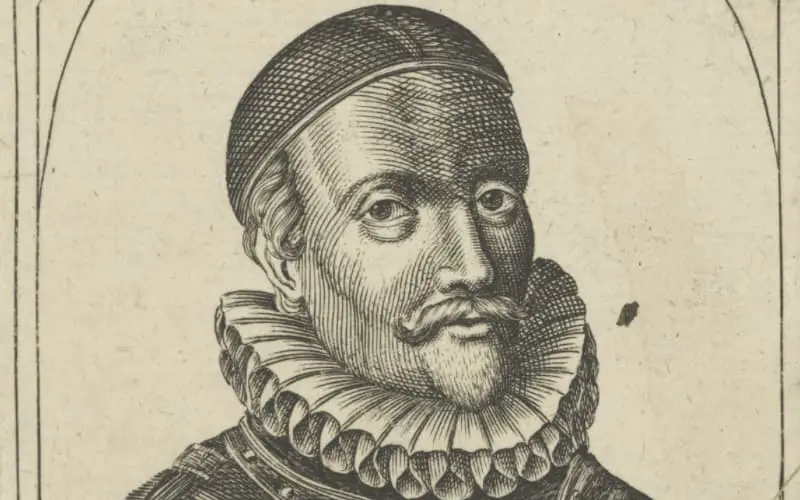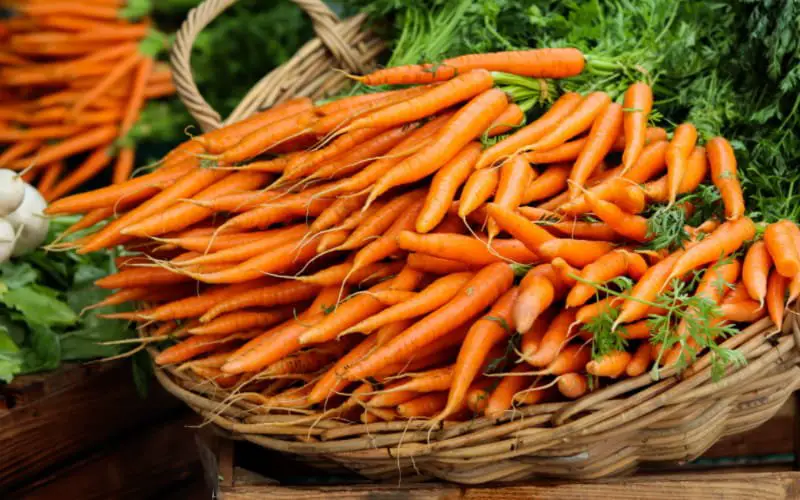

Speaking as a Dutch person I have never thought twice about our national coloring being orange. When the Dutch national football team plays, the whole of the Netherlands wears an orange shirt or puts on an orange wig. One way or the other, it is embedded in our culture, but why? That is what I’m going to tell you in this blog!
Dutch people love orange because it is the national color of the Netherlands. The color orange has been a symbol of the Netherlands for many centuries. It is derived from the surname of the Dutch royal family. During national holidays, everyone wears orange clothing to symbolize our national unity.
Worldwide the Netherlands is associated with the color orange, while the colors of the Dutch flag are red, white, and blue. To find out exactly why the Netherlands is always associated with orange, we have to go way back in time.
To get an answer to the question of why the Dutch like the orange color, we must go back to the 16th century. On April 24th, 1533, Willem van Nassau was born. In the Netherlands, he is often referred to by the Dutch people as the “Vader des vaderlands” (founding father). He is seen as one of the most important people in Dutch history.
In 1544, Willem van Nassau inherited the princedom of Orange (“Oranje” in Dutch), situated in what is currently South France, when he was 11 years old. He gained the title “Prince of Orange”, and from that moment he was officially known as Willem van Oranje-Nassau.
In the 16th century, Spain owned a large part of Europe, including the Netherlands. The ruler of Spain at the time was King Filips II. He put Willem van Oranje-Nassau in charge of three Dutch provinces: Zeeland, Holland, and Utrecht. Willem van Oranje-Nassau also became the leader of the Dutch army.
The Spanish King Filips II wanted his enormous empire to become more united. He wanted to make sure that everyone within his kingdom was catholic, just like himself. Anyone who disagreed was tortured or killed. Willem van Oranje-Nassau did not accept this and started a rebellion against Filips II with his army and the Dutch people.
This battle would eventually go into history as the 80 Years’ War. During this war, the rebels that fought alongside Willem van Oranje-Nassau used an orange-white-blue flag as their symbol. Orange, because of the surname of their leader Willem van Oranje, and white and blue because of the colors of the uniform that he wore. This flag would eventually serve as the Dutch flag for more than half a century.
On July 10th, 1584, Willem van Oranje-Nassau was killed by Balthasar Gérards, following the orders of Filips II. After his death, Willem van Oranje-Nassau was recognized as the hero of the Dutch nation. He gave his life to save the Dutch people from King Filips II. Eventually, the rebellion and war would last for many years to come, but in 1648, the Netherlands was eventually announced independent.
Because of his important role during the 80 Years’ War, Willem van Oranje-Nassau received the honouring title “Vader des vaderlands” (founding father), and the orange color would always remain a symbol for the Netherlands.
Willem van Oranje-Nassau:

As you probably already know, the Dutch flag nowadays consists of the colors red, white, and blue, as opposed to the orange-white-blue flag that was used by the Netherlands between 1572 and 1650.
There are many theories as to why the orange color has disappeared and been replaced by the red color. One theory states that the color orange would have been made from plant-based pigments, causing the color to fade quickly. Another possible reason is that the flag would have been difficult to recognize by the ships at sea. In addition, the red fabric was likely a lot cheaper and easier to obtain than the orange fabric.
However, none of these theories are supported by solid pieces of evidence. In the centuries that followed, there have been many discussions in the Netherlands about the possibility of reintroducing orange in the Dutch flag. The discussions never got anywhere, and as a result, the red-white-blue flag is still the national flag of the Netherlands.
Most likely, everyone has seen or eaten them once: “Dutch carrots”. In the Netherlands, we just call them carrots, but abroad they are called “Dutch carrots”. In addition, most people will only know of the distinctive orange carrot. However, they were actually yellow, white, or purple in the past.
Could the name “Dutch carrots” have anything to do with the orange color? In the 16th century, the Dutch agricultural sector was way ahead of the rest of the world. Because of this, the Dutch farmers succeeded in growing orange carrots.
Long ago, it was thought that “Dutch Carrots“ was a way to honor Willem van Oranje-Nassau. However, research determined that the orange carrots already existed even before this time. Regardless, after the Dutch people symbolized the color orange as their national color, the orange carrots were dedicated to the royal family Van Oranje-Nassau.
This explains why orange carrots are called “Dutch carrots” abroad.
Dutch carrots:

The national anthem of the Netherlands is the Wilhelmus. According to the Guinness Book of Records, the Wilhelmus is the oldest national anthem in the world. The lyrics of the Wilhelmus were written around 1570, though it was only announced as the official national anthem of the Netherlands in 1932.
The Wilhelmus comprises a total of 15 couplets, and the lyrics describe the life of Willem van Oranje-Nassau. This confirms once again how important Willem van Oranje-Nassau was for the Netherlands.
The national anthem of The Netherlands:
In the Netherlands, there are two main occasions during which the entire country dresses in orange. The first one is when the Dutch national football team is playing. The second one is during King’s day each year on the 27th of April. During these occasions, the entire country transforms in the orange color and people try to dress up as crazy as possible.
King’s day is celebrated in the Netherlands each year on the 27th of April. During this national holiday, the Netherlands celebrates the birthday of King Willem-Alexander van Oranje-Nassau. The tradition is to wear orange clothes and to have fun celebrating. During King’s day, all streets and squares in large cities are completely colored orange.
On King’s day, many activities are organized, such as performances, flea markets, and concerts. In addition, the royal family pays a visit to a Dutch city each year. During this visit, the King walks with his family through the city and joins in on activities that have been organized for the royal family.
Every year, the royal visit is broadcast live on television. This is one of the reasons why it is a huge honor as a city to receive the King and his family. It is also a chance for the city to show the rest of the Netherlands how beautiful their city is.
Before Willem-Alexander van Oranje-Nassau became King of the Netherlands, people celebrated Queen’s day every year on the 30th of April to celebrate the birthday of Queen Beatrix van Oranje-Nassau.
Nowadays there are still many tourists in Amsterdam who are dressed in orange when they visit the city on the 30th of April. These tourists most likely rely on outdated information; however, it does make for hilarious situations.
Click here to find inspiration for King's Day activities.
One of the biggest reasons why the Netherlands is associated with the orange color is through football. Naturally, every Dutch national sports team plays in orange outfits, and this goes for all sports. But the national Dutch football team is probably known the most by people.
However, it is the Dutch football fans that are perhaps even more known around the world. The so-called “oranje legioen” (orange legion) is worldwide known as one of the most enthusiastic supporters. During every World and European Championship, this “orange legion” is there, ready to cheer the Dutch national team to victory.
In all cities where the Dutch national team has to play during these Championships, the entire city transforms into the orange color. Before the start of a football match, the “orange legion” marches towards the stadium while celebrating and dancing. The Dutch fans are known for their kindness and hardly ever cause trouble. They are also known to celebrate with fans of other countries.
Click here if you would like to know more about the history of Dutch football.
As you were able to see, the orange color is embedded deeply into the Dutch culture. We had to go far back in time to find out why the Netherlands loves the orange color so much. You now also know who Willem van Oranje-Nassau was, why orange carrots are called “Dutch carrots”, and that you should never come to Amsterdam in orange clothes on the 30th of April!